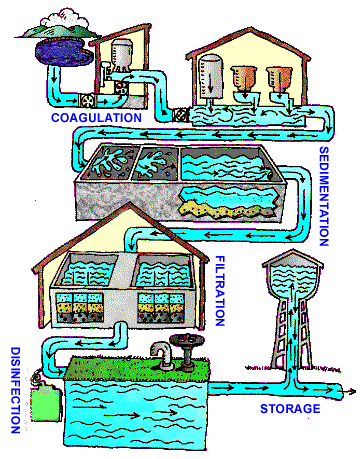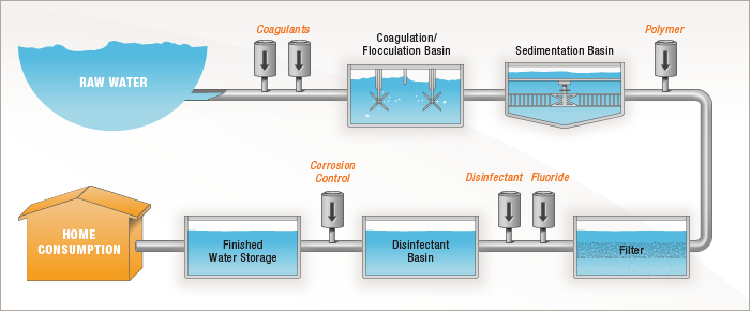Industries rely on water treatment polymer to improve filtration efficiency.
Wiki Article
Check Out Exactly How Water Therapy Polymer Features in Reliable Wastewater Treatment Systems
The combination of water therapy polymers right into wastewater therapy systems stands for a substantial advancement in enhancing operational effectiveness. These polymers work mainly via devices of coagulation and flocculation, properly accumulating put on hold fragments for less complicated elimination. Their versatility across varying environmental problems adds to boosted sedimentation and lowered sludge quantity. Recognizing the details kinds of polymers and their applications can expose deeper insights right into maximizing therapy processes. What effects do these innovations hold for future wastewater monitoring methods?Summary of Water Therapy Polymers
The performance of wastewater administration depends upon the application of numerous treatment agents, amongst which water treatment polymers play a crucial function. These synthetic or all-natural polymers are designed to boost the effectiveness of physical and chemical procedures in wastewater therapy systems. Their primary feature is to help with the gathering of suspended fragments, ultimately boosting the general quality of cured water.Water treatment polymers can be categorized into a number of categories, including flocculants, coagulants, and dispersants. Flocculants, for circumstances, promote the development of larger accumulations, or flocs, by bridging smaller sized particles together. Coagulants counteract the charges of put on hold fragments, enabling them ahead together and clear up more successfully. Dispersants, on the various other hand, are utilized to maintain fragments in suspension, preventing them from agglomerating.
The application of these polymers not only enhances the removal of impurities however likewise optimizes the functional performance of treatment plants. Additionally, the choice of ideal water therapy polymers is essential, as their efficiency can differ based upon variables such as water chemistry, temperature, and turbidity levels. In general, water treatment polymers are necessary parts in modern wastewater management techniques, contributing to cleaner water and sustainable environmental methods.
Systems of Coagulation and Flocculation
Coagulation and flocculation are essential processes in wastewater therapy that symbolize the principles of particle communication and aggregation. These mechanisms are crucial for getting rid of put on hold solids, colloids, and other pollutants from water. Coagulation involves the destabilization of put on hold bits, usually achieved via the enhancement of coagulants such as metal salts. These coagulants counteract the electrostatic fees that keep particles apart, advertising initial gathering.Following coagulation, flocculation takes place, defined by the gentle blending of water to encourage the formation of bigger aggregates, or flocs. Throughout this phase, polymers play a significant duty by connecting in between particles, boosting the formation of these bigger accumulations. The physical and chemical interactions throughout flocculation lead to a raised size and thickness of the fragments, facilitating their succeeding elimination with sedimentation or purification.
The performance of coagulation and flocculation procedures is influenced by numerous elements, consisting of pH, temperature level, and the nature of the pollutants existing. Understanding these systems enables the optimization of wastewater treatment systems, bring about improved removal performances and overall water quality. As a result, the mindful choice and application of coagulants and flocculants are essential for effective wastewater monitoring.
Sorts Of Water Treatment Polymers
Frequently used in wastewater therapy, water treatment polymers are essential for improving the effectiveness of coagulation and flocculation procedures. These polymers can be generally classified right into 3 major kinds: anionic, cationic, and non-ionic.Anionic polymers, which carry an unfavorable fee, are especially efficient in dealing with wastewater with favorably billed pollutants. They promote the gathering of put on hold fragments, advertising the development of bigger flocs that resolve even more conveniently. Conversely, cationic polymers possess a positive charge and are frequently used in applications where negatively charged fragments control, such as in particular commercial effluents. Their capacity to counteract costs allows the efficient binding of bits, resulting in enhanced sedimentation rates.
Non-ionic polymers, doing not have a fee, function as versatile agents that can boost the performance of both anionic and cationic polymers. Their primary duty includes enhancing the thickness of the wastewater, consequently enhancing the overall retention time of the flocs in i loved this the therapy system.
Comprehending the distinct features of these kinds of water treatment polymers enables the optimization of wastewater treatment procedures, eventually resulting in enhanced elimination efficiencies and better water high quality.
Applications in Wastewater Treatment

In community wastewater treatment plants, water therapy polymers help in reducing the volume of sludge created throughout the therapy process. water treatment polymer. This reduction not only enhances operational effectiveness but likewise decreases disposal prices connected with sludge management. Additionally, polymers contribute in dealing with commercial effluents, where they help in the elimination of certain impurities such as hefty steels and natural toxins, making certain conformity with ecological laws

In addition, water therapy polymers are made use of in the improvement of biofiltration systems, where they improve microbial activity and total therapy effectiveness. Their function in membrane processes, such as reverse osmosis, also can not be neglected, as they add to membrane layer fouling control and lengthen the life expectancy of filtering systems. Through these diverse applications, water therapy polymers are necessary for attaining effective and lasting wastewater administration.

Benefits of Making Use Of Polymers
Using water treatment polymers in wastewater systems supplies various advantages that considerably enhance therapy efficiency and general operational efficiency. Firstly, these polymers work as effective coagulants and flocculants, advertising the aggregation of put on hold solids and facilitating their elimination. This procedure leads to more clear effluent and reduces the worry on downstream treatment phases.In addition, polymers enhance the dewatering procedure by enhancing the sedimentation attributes of sludge. This causes decreased quantity and weight of waste material, eventually lowering disposal expenses. Moreover, their capability to work throughout varying pH levels and temperature levels ensures adaptability in various wastewater settings.
Polymers also add to the stabilization of biological procedures by giving nutrients and maintaining optimal conditions for microbial growth - water treatment polymer. This Full Article boosted microbial task help in the failure of raw material, boosting total treatment effectiveness
In addition, using polymers i was reading this can lead to decreased chemical usage, reducing functional expenses and ecological effect. By enhancing the treatment process and enhancing sludge administration, water treatment polymers play a critical duty in advertising lasting wastewater monitoring techniques, straightening with governing criteria and ecological goals.
Final Thought
To conclude, water treatment polymers are vital for improving the effectiveness of wastewater treatment systems. Their ability to facilitate coagulation and flocculation procedures brings about boosted sedimentation and minimized sludge volume, thus optimizing therapy efficiency. The numerous kinds of polymers offered for different applications ensure flexibility throughout diverse problems, eventually leading to clearer effluent. The advantages of making use of these polymers highlight their significance in attaining efficient and affordable wastewater management remedies.Report this wiki page